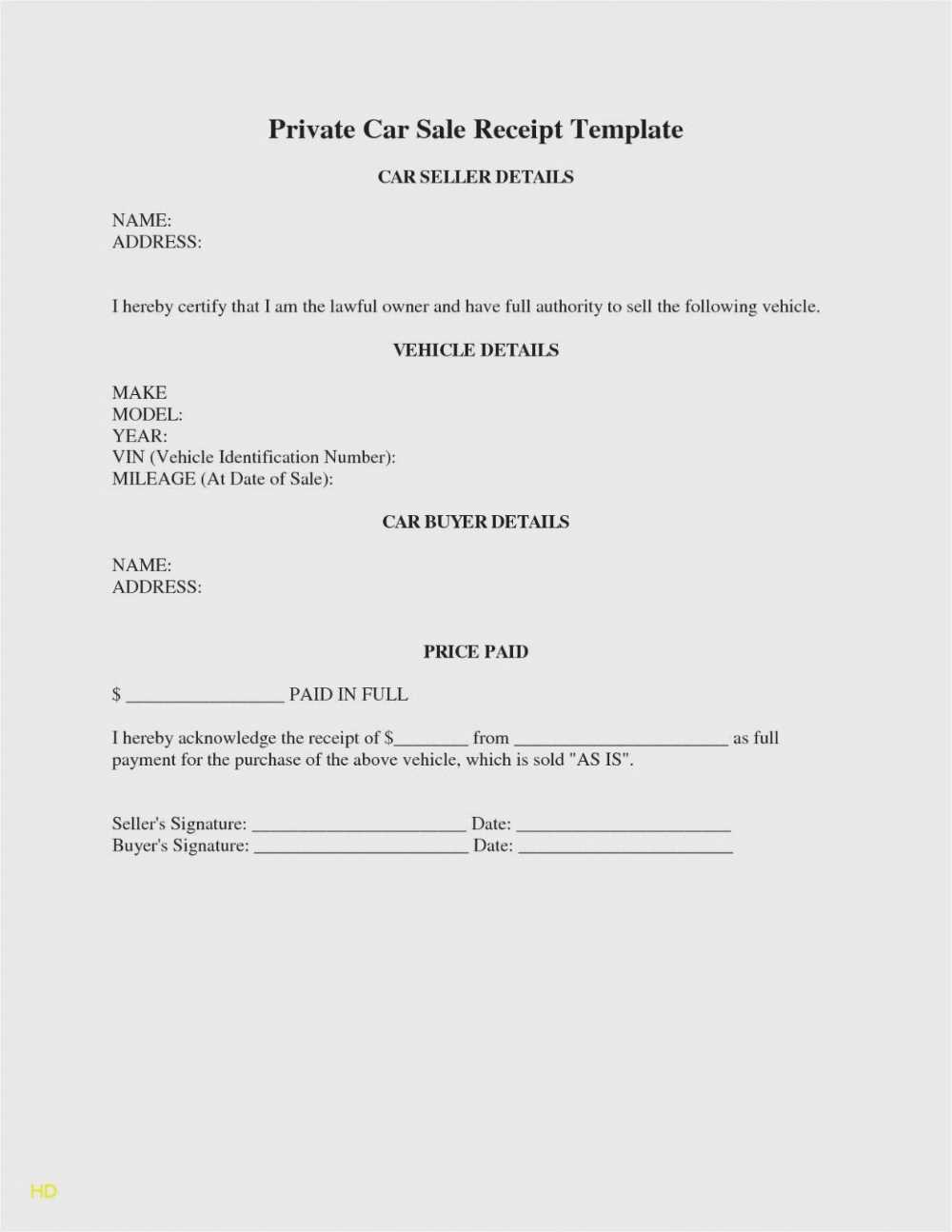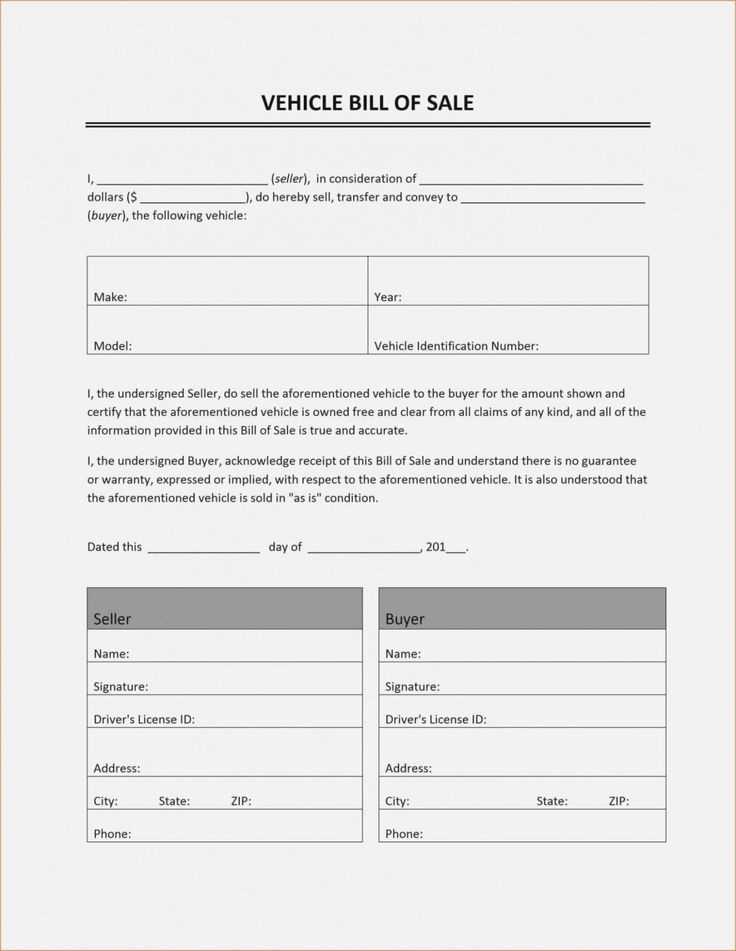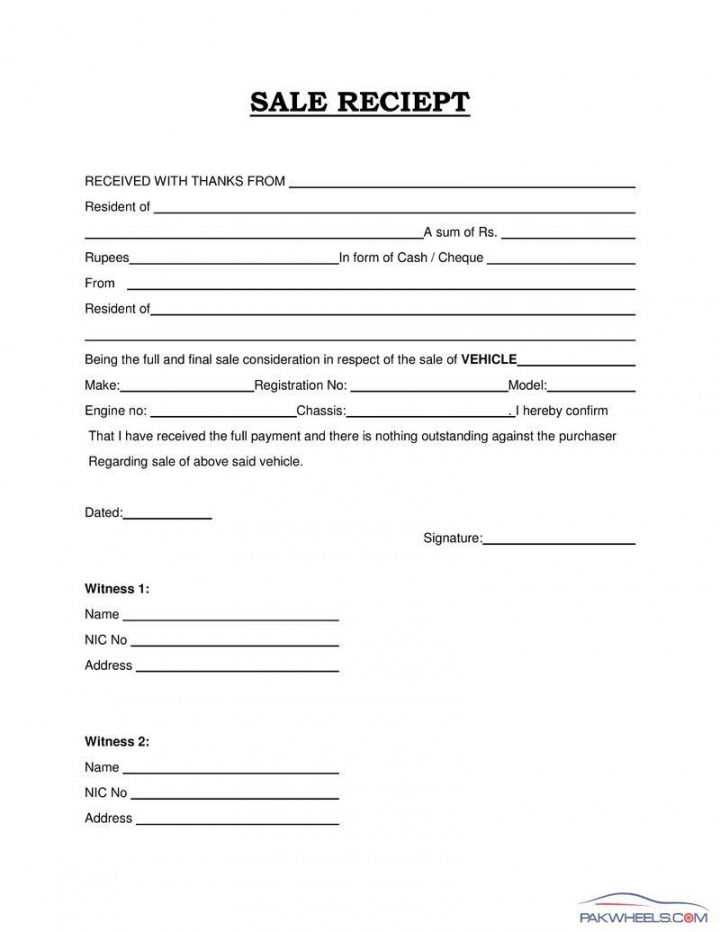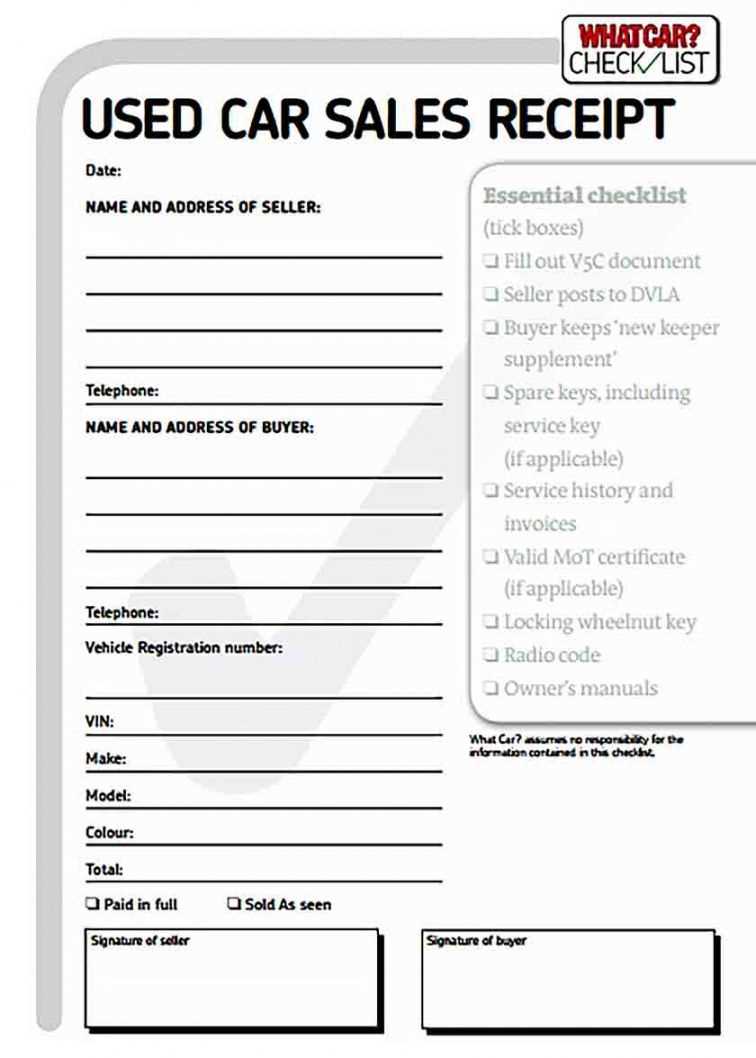
Key Details to Include

Ensure the receipt contains all critical information to avoid disputes. Both the buyer and seller should have a signed copy for their records.
- Buyer’s and Seller’s Full Name and Address: Verify identification to prevent fraud.
- Vehicle Information: Include make, model, year, color, VIN, and mileage.
- Sale Date and Price: Specify the exact date and agreed amount.
- Payment Method: State whether cash, check, or bank transfer was used.
- Condition of the Car: Note if sold “as is” or with a warranty.
- Signatures: Both parties must sign to confirm the agreement.
Sample Template

Use this structure for a legally binding receipt:
Receipt for Vehicle Sale Seller: [Full Name] Address: [Street, City, State, ZIP] Phone: [Contact Number] Buyer: [Full Name] Address: [Street, City, State, ZIP] Phone: [Contact Number] Vehicle Details: Make: [Brand] Model: [Model] Year: [Year] Color: [Color] VIN: [Vehicle Identification Number] Mileage: [Odometer Reading] Sale Price: $[Amount] Payment Method: [Cash/Check/Bank Transfer] Sale Date: [MM/DD/YYYY] The vehicle is sold as is with no warranties, unless stated otherwise. The buyer acknowledges full responsibility after purchase. Seller’s Signature: ____________ Date: ____________ Buyer’s Signature: ____________ Date: ____________
Both parties should keep a copy for reference. If required by local regulations, submit a bill of sale to the relevant authorities.
Receipt for Selling a Car Template
Key Elements to Include in a Sale Receipt
Legal Requirements and Compliance Considerations
Step-by-Step Guide to Drafting a Document
Common Mistakes to Avoid in a Sale Receipt
Printable and Digital Format Options
How to Verify and Store a Sale Receipt
Ensure the receipt includes the vehicle’s make, model, year, VIN, and mileage. Both buyer and seller must provide full legal names, addresses, and contact details. Specify the purchase price, payment method, and date of sale. If applicable, include a statement confirming that the vehicle is sold “as-is” with no warranties.
Follow local regulations when drafting the receipt. Some jurisdictions require notarization or additional disclosures, such as outstanding liens or emissions compliance. Research state-specific requirements to prevent legal complications.

To draft a clear receipt, structure it with distinct sections for vehicle details, buyer and seller information, financial terms, and signatures. Use straightforward language to avoid misinterpretation. Provide two copies–one for each party–and ensure both sign the document.
Avoid common errors like missing signatures, incorrect VINs, or vague terms. Double-check that all information is accurate before finalizing the receipt. Omissions or mistakes can cause disputes or legal issues.
Offer both printable and digital versions. A printed copy with handwritten signatures is traditional, while a scanned digital version ensures backup security. Some states accept electronically signed documents, making digital receipts a valid alternative.

Store the receipt in a secure location for future reference. Sellers should keep a copy for tax records and liability protection. Buyers should retain it for registration and proof of ownership. A digital backup prevents loss and allows easy access when needed.


